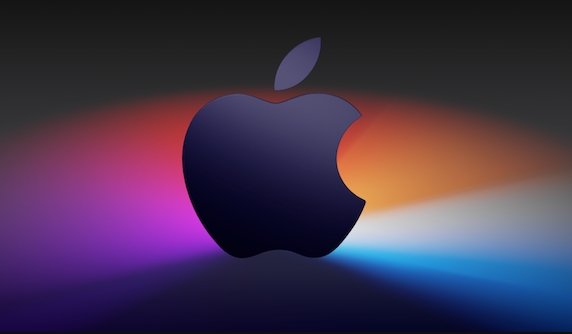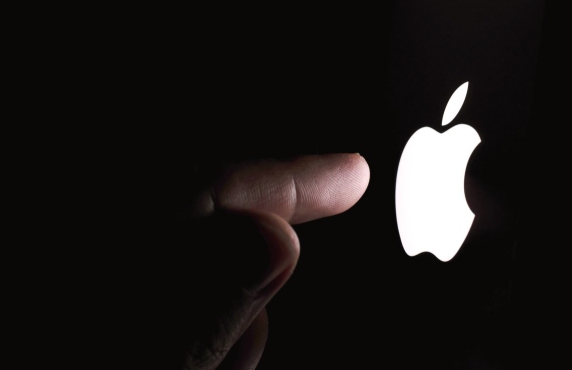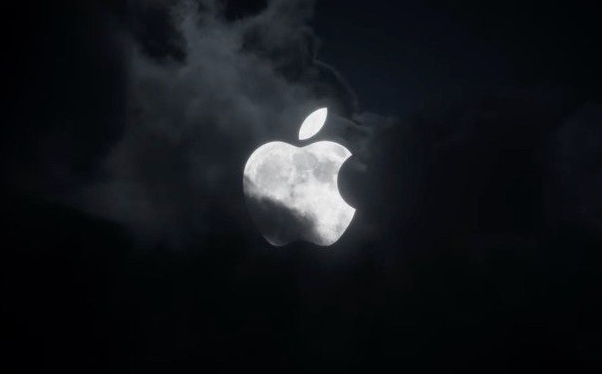You can rearrange most non-system menu bar icons by holding the Command (?) key and dragging them to your preferred position. 2. To remove unwanted icons, disable “Show in menu bar” in the app’s preferences for third-party apps, or go to System Settings > Control Center and set system icons to “Don’t Show in Menu Bar”. 3. Re-add useful system icons like battery percentage, Bluetooth, Wi-Fi, or clock details by enabling them in System Settings under Battery, Control Center, or Desktop & Dock. 4. Use third-party tools like Bartender, Vanilla, or iStat Menus for advanced control, including hiding icons, grouping, or replacing default system monitors. Bonus: Hold Command (?) and drag icons together to automatically clean up their layout visually. By combining manual adjustments, system settings, and optional utilities, you can achieve a streamlined and efficient menu bar tailored to your workflow.

Customizing the menu bar in macOS lets you streamline your workflow by keeping only the icons and tools you use regularly. Over time, the menu bar can get cluttered with apps and system icons, so organizing it improves both clarity and efficiency. Here’s how to manage and customize it effectively.

1. Rearranging Menu Bar Items Manually
You can drag and reposition most menu bar icons (except Apple’s system icons like Wi-Fi, battery, and clock) to organize them in your preferred order.
Steps:

- Hold down the Command (?) key on your keyboard.
- Click and hold any movable icon in the menu bar.
- Drag it left or right to your desired position.
- Release the mouse and then let go of the Command key.
Note: You can’t rearrange Apple’s native status icons (like Bluetooth or Time Machine), but third-party app icons and some system extras (like Sound or Spotlight) can usually be moved.
2. Removing Unwanted Icons
To declutter the menu bar, you can remove icons you don’t use.

For third-party apps:
- Many apps place icons in the menu bar by default (e.g., Dropbox, OneDrive, Slack).
- Open the app, go to its preferences, and look for an option like “Show in menu bar” or “Hide icon”.
- Disable that option to remove the icon.
For system icons:
- Go to System Settings (System Preferences on older macOS).
- Click on Control Center (or Dock & Menu Bar in older versions).
- Scroll through the list of system services (like AirDrop, Display, Battery, etc.).
- For each item, choose “Don’t Show in Menu Bar” or toggle off “Show in Menu Bar”.
Example: If you rarely use the Input menu (for language switching), go to Keyboard > Input Sources, then uncheck “Show Input menu in menu bar”.
3. Adding Useful Icons Back
You might want to add certain system features back to the menu bar for quick access.
Common ones to enable:
- Battery percentage: Go to System Settings > Battery, and toggle on “Show Percentage”.
- Bluetooth/Wi-Fi: In Control Center, set them to “Always Show” in the menu bar.
- Clock options: Go to Desktop & Dock > Menu Bar Clock to enable date, day, or a 24-hour format.
Some options appear only when relevant (e.g., Time Machine), but you can choose to always show them if needed.
4. Using Third-Party Tools for Advanced Control
If you want even more control — like hiding specific icons without disabling the app — try these utilities:
- Bartender: Lets you organize, hide, and rearrange all menu bar items with folders and separators.
- Vanilla: A lightweight app to hide all third-party icons and show them only when needed.
- iStat Menus: Replaces multiple system icons with a customizable, detailed system monitor.
These tools are especially helpful if you have many apps adding icons and want a cleaner look.
Bonus Tip: Enter “Clean Up” Mode Temporarily
Hold the Command (?) key and drag icons close together — macOS will automatically snap and organize them neatly. This doesn’t remove icons but helps visually group them.
Basically, macOS gives you solid control over the menu bar — just not all in one place. You’ll need to tweak settings both within individual apps and in System Settings. With a little setup, you can have a clean, functional menu bar that works for you.
The above is the detailed content of How to customize the menu bar in mac os. For more information, please follow other related articles on the PHP Chinese website!

Hot AI Tools

Undress AI Tool
Undress images for free

Undresser.AI Undress
AI-powered app for creating realistic nude photos

AI Clothes Remover
Online AI tool for removing clothes from photos.

Clothoff.io
AI clothes remover

Video Face Swap
Swap faces in any video effortlessly with our completely free AI face swap tool!

Hot Article

Hot Tools

Notepad++7.3.1
Easy-to-use and free code editor

SublimeText3 Chinese version
Chinese version, very easy to use

Zend Studio 13.0.1
Powerful PHP integrated development environment

Dreamweaver CS6
Visual web development tools

SublimeText3 Mac version
God-level code editing software (SublimeText3)

Hot Topics
 What is the sudo command and when should I use it?
Jul 02, 2025 am 12:20 AM
What is the sudo command and when should I use it?
Jul 02, 2025 am 12:20 AM
sudo stands for "substituteuserdo" or "superuserdo", allowing users to run commands with permissions of other users (usually root). Its core uses include: 1. Perform system-level operations such as installing software or editing system files; 2. Accessing protected directories or logs; 3. Manage services such as restarting nginx; 4. Modify global settings such as /etc/hosts. When using it, the system will check the /etc/sudoers configuration and verify the user password, provide temporary permissions instead of continuously logging in as root, ensuring security. Best practices include: only when necessary, avoid blindly executing network commands, editing sudoers files with visudo, and considering continuous operations.
 How to edit the hosts file on a Mac?
Jul 01, 2025 am 12:20 AM
How to edit the hosts file on a Mac?
Jul 01, 2025 am 12:20 AM
The steps to modify the Hosts file on your Mac are as follows: 1. Use the terminal to run the command sudonano/etc/hosts with administrator permission to open the file and edit it; 2. Add or modify the IP and domain name mapping, the format is "IP address space domain name", and cannot be separated by Tab; 3. Press Control O to save, and then press Control X to exit the editor; 4. Run sudokillall-HUPmDNSResponder to refresh the DNS cache to make the modification take effect; 5. It is recommended to back up the original file before modification to avoid format errors affecting network access. Pay attention to spelling and grammar when operating to ensure that every step is accurate.
 How to run older 32-bit apps on modern macOS?
Jul 12, 2025 am 12:32 AM
How to run older 32-bit apps on modern macOS?
Jul 12, 2025 am 12:32 AM
If macOS no longer supports 32-bit programs, you can try the following methods: 1. Use a virtual machine (such as ParallelsDesktop or VMwareFusion to install the old version of macOS to run 32-bit programs. You need to prepare a Mac, virtual machine software and legacy system image with good performance; 2. Find a 64-bit updated version of the software or use alternative software, such as using GIMP or AffinityPhoto instead of the old version of Photoshop; 3. Install Windows through BootCamp on Intel Mac to run 32-bit applications, but the operation is complicated and the driver may be incompatible; 4. If the software is no longer maintained, you can only keep the old Mac running. Each method has its own advantages and disadvantages, and should be based on the technology
 What is the difference between a Time Machine backup and an iCloud backup?
Jul 02, 2025 am 12:55 AM
What is the difference between a Time Machine backup and an iCloud backup?
Jul 02, 2025 am 12:55 AM
iCloud backup is suitable for critical data on iOS devices, while TimeMachine is used for full system backups of Macs. 1. iCloud automatically backs up settings, messages, photos, etc. on iPhone and iPad, but does not include re-downloadable applications and media; 2. TimeMachine requires external storage devices, which can back up the entire Mac system including files, applications and desktop layout; 3. iCloud is more convenient to use in daily life, relying on network and space management, while TimeMachine provides local storage and retains multiple versions of files; 4. Most users use both at the same time to achieve comprehensive data protection.
 What is Private Relay in iCloud and how does it work?
Jul 14, 2025 am 12:11 AM
What is Private Relay in iCloud and how does it work?
Jul 14, 2025 am 12:11 AM
PrivateRelay is a privacy protection feature launched by Apple that hides user identities and browsing content through encryption and segmentation of network requests. The specific operation is divided into two steps: one is to encrypt the data and forward it through two relay servers. The first is to know the IP and the second is to know the content that does not know the user's identity; the second is to realize privacy isolation, and even Apple cannot obtain the complete record. Supported devices must meet: iOS15/iPadOS15/macOSMonterey and above systems, log in to AppleID and subscribe to iCloud services, and are only available for Safari browser. Its benefits include preventing ISP tracking, no additional settings are required, default activation, etc.; the limitation is that it does not support the wall surfing and only protects Safar.
 How to set up file sharing between two Macs on the same network?
Jul 14, 2025 am 12:08 AM
How to set up file sharing between two Macs on the same network?
Jul 14, 2025 am 12:08 AM
To share files between two Macs on the same network, first make sure that the two devices are connected to the same LAN, then enable file sharing on the host, set shared folders and access permissions, and then connect from another Mac through the access sidebar or manually enter the SMB address, and finally you can browse, copy or transfer files. Common problems include waiting or restarting the network when the device cannot be discovered. If the permissions are incorrect, you need to check the username, password and sharing settings. If the connection fails, you can try the SMB address. If the firewall blocks, you can temporarily close the test.
 How to customize the Dock on a Mac?
Jul 12, 2025 am 01:29 AM
How to customize the Dock on a Mac?
Jul 12, 2025 am 01:29 AM
To adjust the Dock on Mac according to usage habits to improve efficiency, you can follow the following steps: 1. Adjust the size and position: Go to "System Settings" > "Desktop and Dock", check "Automatic Show and Hide Dock", slide the bar to adjust the icon size; select the left, bottom or right place in "Dock Position". 2. Add or remove apps and folders: Drag the app from "Applications" to the Dock, and drag out the outside of the icon to remove the item. 3. Customize behavior and animation effects: Set click icon to display recent documents, window thumbnail previews, and use dividers or empty launchers to improve organization and quickly return to the desktop. Turning on the auto-hide function helps save screen space and make your work more focused.
 How does iCloud Drive for Desktop & Documents folder work?
Jul 08, 2025 am 12:43 AM
How does iCloud Drive for Desktop & Documents folder work?
Jul 08, 2025 am 12:43 AM
iCloudDrive's Desktop & Documents folder feature enables cross-device synchronization by migrating desktop and document folders to iCloud. 1. After turning on, the system automatically moves the file to iCloudDrive to maintain local display and access experience; 2. When connected to the network, the file can be edited and synchronized to other devices at any time; 3. When Mac storage space is insufficient, the files will "slim down" with great use, only icons and names are retained, and the content will be downloaded as needed; 4. Set the path to macOS settings→AppleID→iCloud→check "iCloudDrive"→click "Options" and enable "Desktop and Document Folder"; 5. Notes include: First uploading requires stable






